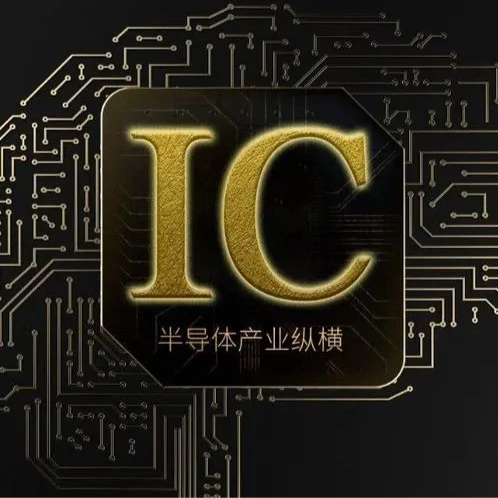India Missed Its Best Chance to Surpass ‘Made in China’
On July 24th, Foxconn’s parent company Hon Hai Precision Industry Co., Ltd., a globally renowned electronics manufacturing service giant, officially released a major investment announcement. Foxconn will invest in Zhengzhou to build a new headquarters building to house its new business headquarters function. This strategic move not only demonstrates Foxconn’s commitment and confidence in the Chinese market, but also heralds a new round of expansion and upgrading of the group’s business landscape.
The first phase of the project is located in the Zhengdong New District, with a construction area of approximately 700 mu (around 116 acres) and a total investment of about 10 billion RMB. The main components include a headquarters management center, R&D and engineering center, strategic industry development center, strategic industry finance platform, industry research institute and key talent center, marketing center, and supply chain management center. These will provide industrial resources, technical capabilities and other relevant support for Foxconn to implement its “3+3” strategy in mainland China. At the same time, around the implementation of the “3+3” strategy, Foxconn will focus on deploying an electric vehicle prototyping center and solid-state battery projects in the Zhengzhou Airport Economic Zone.
Particularly noteworthy is that this investment also clearly reveals Foxconn’s ambitions in the field of new energy vehicles and future energy technologies. The surrounding and associated areas of the building will be laid out for an electric vehicle manufacturing base and solid-state battery R&D and production projects, signaling that Foxconn has officially entered the high-growth track of new energy vehicles. The aim is to drive breakthroughs and applications in electric vehicle and solid-state battery technology through technological innovation and resource integration, to contribute to global green mobility and energy transformation.
Whether in terms of investment scale or strategic positioning, Foxconn’s new business headquarters building has a significant impact. These signals indicate that Foxconn is returning to China, and that they are determined to make the Chinese mainland a major base.
Foxconn Layout of the Indian Market
In sharp contrast to this expansion in Zhengzhou, in 2019, Terry Gou said, “When I build factories in the mainland, it’s to feed the mainland people!” After that, Foxconn has been accelerating its “withdrawal” from China. On the one hand, the scale of many of Foxconn’s factories in mainland China has been continuously shrinking. On the other hand, they are continuously increasing their investment in Southeast Asia and South Asia.
The reason Foxconn is doing this is, on the one hand, to follow in the footsteps of Apple and venture into the huge potential markets of Southeast Asia and South Asia. On the other hand, it is also intended to reduce its dependence on mainland China.
Looking back on Foxconn’s development history, it can be said to be an epic shared with China’s manufacturing industry. Since entering the mainland market in the late 1980s, Foxconn has quickly stood out in the field of electronic manufacturing thanks to its advanced production technology, strict quality control, and efficient production management. With the rise of tech giants like Apple, Foxconn, with its expertise in manufacturing and economies of scale, has successfully become a core supplier for companies like Apple, providing billions of high-quality electronic products for global consumers.
To a certain extent, the mainland China and Foxconn have been mutually successful over the past decades. The mainland has provided Foxconn with favorable policies, abundant cheap labor, and industrial support, helping Foxconn develop and grow into the world’s largest OEM factory. In turn, Foxconn has brought a large number of jobs to mainland China, driving the growth of local economies and exports.
 Foxconn Technology Group’s plant in Zhengzhou
Foxconn Technology Group’s plant in Zhengzhou
At present, many regions in our country, especially Zhengzhou in Henan, have formed a strong employment and economic dependence on Foxconn. The majority of the Apple phones that Foxconn manufactures are now completed at the Zhengzhou base, and Foxconn has become Zhengzhou’s main export enterprise.
 Workers at a production workshop of Foxconn’s technology park in Zhengzhou
Workers at a production workshop of Foxconn’s technology park in Zhengzhou
Statistical data shows that since Foxconn entered Henan, its cumulative imports and exports have accounted for about 60% of the province’s total imports and exports, and the proportion of Zhengzhou’s total imports and exports has reached around 80%. Driven by Foxconn, the Xinzheng Bonded Zone has also achieved leapfrog development, and by 2023, its total imports and exports reached 407.278 billion yuan. The total imports and exports generated by the Xinzheng Bonded Zone alone account for 50.23% of the entire Henan province, and the Xinzheng Bonded Zone has also become the leading comprehensive bonded zone in the country.
However, in recent years, labor costs in mainland China have been constantly rising, and environmental protection policies have become increasingly strict, causing Foxconn’s operating costs to continue to increase. At the same time, emerging markets like India, with their low labor costs, have attracted more and more international companies to invest and build factories. Against this backdrop, Terry Guo began to consider moving 300 billion in production capacity to emerging markets like India, and has since been diversifying its supply chain to shift some of it towards India.
As early as 2015, Foxconn announced the establishment of a production base in India, providing local employment opportunities and technical support. With the continuous development of the Indian market, Foxconn’s investment in the Indian market has been increasing. This year, Terry Guo announced an additional $500 million investment in the Telangana factory in India, which will create 25,000 local jobs.
Foxconn Accelerates Expansion in Mainland China, Driven by Apple’s Reshoring of the Industrial Chain
In recent years, the narrative of China’s low-end manufacturing shifting to Vietnam and India has never stopped. As the world’s largest electronics contract manufacturer, Foxconn has also moved part of its industrial chain to India and Vietnam. However, with Apple’s investment in Indian factories hitting bottlenecks, the situation has reversed.
Reports indicate that the iPhone 15 assembly business in India only accounts for about 10% of the total, and there are numerous issues. The Indian factories rely heavily on importing a large number of components from mainland China, which affects both quality and efficiency. Additionally, the yield rate for iPhone assembly in the Indian factories is only around 50%.
 Foxconn’s Sriperumbudur facility in India
Foxconn’s Sriperumbudur facility in India
These two problems have caused disruptions in shipping products to the European and Chinese mainland markets, impacting sales. Due to the difficulties in assembling the iPhone 15 in India, resulting in product returns, Apple has been forced to significantly discount prices.
After learning from the experience in India, Apple no longer dares to bet its high-end models on the Indian factories. Instead, it has decided to allocate the production of some of the latest high-end iPhone 16 series models to mainland China.
In addition to Foxconn, Apple has also allocated a large number of production orders for the high-end iPhone 16 series to BYD, which is also a partner in assembling iPads.
On March 22, BYD’s president Wang Chuanfu met with Apple CEO Tim Cook at Apple’s China headquarters in Shanghai. During the meeting, Cook stated: “I think there is no place more important for Apple’s supply chain than China.” When meeting with China’s Commerce Minister Wang Wentao, Cook also reiterated that Apple will continue to focus on long-term development in China and will continue to increase investment in China’s supply chain, R&D, and sales.
Foxconn’s investment in the new energy vehicle track may also be related to Apple’s revival of its car project. By following Apple’s deployment, Foxconn has decided to invest heavily in mainland China to consolidate its position in the contract manufacturing industry.
The Decline of the Indian Market
Foxconn’s main reasons for setting up factories in India were twofold. Firstly, to respond to the demands of major clients like Apple and diversify its supply chain to mitigate risk and ensure stable production. Secondly, Foxconn saw India’s massive and cheap labor pool as an opportunity to reduce costs. Terry Gou believed Foxconn could replicate its success in mainland China anywhere. However, the reality has been harsh, and the Indian market seems to be gradually “falling out of favor”.
To summarize, the Indian market faces several fatal problems:
Firstly, while labor costs are low in India, the quality and technical skills of the workers are not on par with mainland China, leading to unstable product quality and low production efficiency. Although India also has a population of 1.4 billion, its educational attainment is far behind China, as evidenced by the product yield rates.
Secondly, the poor business environment in India has posed great challenges to Foxconn’s operations. India’s attitude towards foreign companies is undergoing a transformation. Initially, India attracted foreign investment by offering tax incentives, but once these companies grew stronger, India started to suppress and exploit them. For example, Wistron arrived in India before Foxconn, but was acquired by the Tata Group and forced to withdraw from the Indian market.
Through the acquisition of Wistron, the Tata Group has become a contract manufacturer for Apple’s iPhones in India and is also negotiating to acquire a majority stake in Pegatron’s Indian factory. Once these acquisitions are completed, the Tata Group will further expand its influence in the electronics manufacturing industry, becoming an important force in India and globally.
To strengthen its position in smartphone manufacturing, the Tata Group has actively headhunted talent. The group has lured a large number of technical personnel from Foxconn’s Indian operations at a high price. These talents have rich experience and skills, and are crucial to Foxconn’s smartphone manufacturing capabilities.
Although India is a country with a massive market, its business environment has long been criticized, with even the Indian media acknowledging that the country’s business environment is not very friendly to multinational companies.
Furthermore, India’s infrastructure and supply chain development lags far behind China’s. The development of manufacturing requires a well-developed supply chain system, including raw material procurement, component supply, and logistics. However, India’s supply chain system has major deficiencies, leading to low production and delivery efficiency for manufacturing companies. Additionally, India lags far behind China in terms of infrastructure such as electricity and transportation.
Lastly, the policy support from the Indian government is insufficient. Although the Indian government has proposed slogans like “Make in India”, the actual level of support is relatively small. Compared to China’s substantial investments and policy support for the manufacturing sector, India’s support is far from enough.
Although India has been trying to emulate China’s manufacturing development, the challenges India faces in infrastructure, labor, government support, and supply chain make it difficult for India to achieve China’s manufacturing status.
Apple’s Supply Chain Still Predominantly in China, but India Cannot be Overlooked
Although there have been frequent reports about Apple’s industrial chain moving out of China in recent years, China still maintains a dominant position in terms of the number of supply chain companies.
In April this year, Apple published its list of annual suppliers for fiscal year 2023 on its website. Looking at the distribution of factories from the list, mainland China has 155 factories, ranking first; Taiwan, China is second with 49 factories, and Japan is third with 41 factories. On the Southeast Asian side, Vietnam has 32 factories, Thailand and Singapore have 23 each, Malaysia has 18, and the Philippines has 16. In addition, the United States and India have 25 and 13 factories respectively.
Not only does China top the supply chain, but it also has a crucial influence on many of Apple’s overseas factories. Taking the example of Apple’s factories in India, they rely heavily on importing a large number of components from mainland China, which affects their quality and efficiency. In fact, factories producing the iPhone 15 in India only account for about 10% of the total.
As Apple’s new 16th-generation phones are about to enter peak production, both Foxconn in Shenzhen and Henan have launched intense recruitment battles, further demonstrating China’s continued importance to Apple.
Since July, leading Apple supply chain companies such as Luxshare Precision, Foxconn, Lens Technology, and Biel Crystal have been aggressively recruiting, with their job postings dominating the recruitment market. Some manufacturers are even “grabbing people” by continuously increasing wages.
China’s supply chain is incomparable to India’s, forcing Apple to make a commercially rational choice to turn to China.
However, there are also reports suggesting the need to be vigilant about the industry chain shifting to the Indian market, as Apple may assemble the iPhone Pro model in India for the first time, led by Foxconn.
Moreover, India is also gradually increasing its infrastructure construction. After the 2024 Indian general election, Prime Minister Modi announced plans to further expand infrastructure construction. In the budget proposal submitted by the new government on July 23, infrastructure investment was given a prominent position.
 Prime Minister Narendra Modi met Foxconn Chairman Young Liu
Prime Minister Narendra Modi met Foxconn Chairman Young Liu
The Indian finance ministry official stressed that from 2014 to 2023, India has invested 43.5 trillion rupees in the infrastructure industry over the past 10 years. Modi also stated externally: “The development of the past 10 years is just an appetizer, and the main course will appear in the third term.”
Furthermore, Indian Prime Minister Modi announced the “Future Skills Initiative” in 2018. Since then, the Indian Ministry of Electronics and IT, along with NASSCOM, have been collaborating with the IT industry, using the “Future Skills” platform to provide skills training for more than 200,000 IT employees. Currently, the platform offers skills training in 10 emerging technologies such as artificial intelligence, cybersecurity, and blockchain, covering 70 new job roles and 155 new skills.
Due to the existing demographic dividend, India will have more than 90 million people joining the labor market by 2030. In addition to the government, India’s IT giants have also been investing in employee retraining and skill enhancement, with an annual investment of over 10 billion rupees.
Some analysts suggest that Apple and Foxconn are still expanding in India, persisting in their efforts to move away from China.
https://36kr.com/p/2890051484769155




